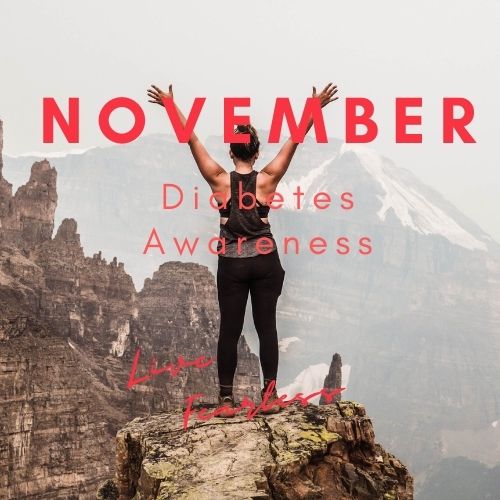National Diabetes Month


November is National Diabetes Month and this year’s focus is on youths with the disease. According to the National Institute of Diabetes and Digestive and Kidney Diseases, this is one of the most common chronic conditions in school-age children and young adults. It affects about 193,000 people under the age of 20.
Diabetes is one of the leading causes of blindness, but can be prevented. As part of the national effort to bring attention to this disease, this article focuses on a proactive approach to managing this disease.
What is Diabetes?
Diabetes is a chronic (long-lasting and persistent) disease that affects your body’s ability to use glucose. Glucose is the main type of sugar in the blood and the major source of energy for the body’s cells.
The body breaks down food into glucose and after you eat your glucose level rises and this triggers your pancreas to release insulin. The insulin in your bloodstream signals the cells to allow the glucose inside the cells.
Without insulin your body cannot use or store glucose for energy and the glucose remains in your bloodstream.
2 Types of Disease
Type 1 is an autoimmune disease caused by the immune system attacking the pancreatic insulin-producing beta cells and destroying them. This causes a buildup of glucose in the bloodstream. You can’t reverse type 1 diabetes; you can only manage it.
Type 2 is when your insulin production is limited and your body’s response to the insulin is decreased. It can eventually lead to complete insulin resistance.
Although there is no cure for type 2, studies show that some people can reverse it through diet, weight loss, and exercise.
Gestational diabetes affects up to 10% of pregnant women in the U.S. each year. The placenta secretes hormones that can cause glucose to build up in your blood. The pancreas can usually produce enough insulin to control the blood glucose level, but when it can’t then gestational diabetes results.
There are two types—A1 and A2. Women with A1 can manage it through diet and exercise. Women with A2 need to take insulin or other medication to manage gestational diabetes. Both types go away after the woman gives birth.
Symptoms of Diabetes
The CDC recommends that you see a doctor for a blood glucose test if you have any of these symptoms:
- Urinate a lot, often at night
- Are very thirsty
- Lose weight without trying
- Are very hungry
- Have blurry vision
- Have numb or tingling hands or feet
- Feel very tired
- Have very dry skin
- Have sores that heal slowly
- Have more infections than usual
Complications
Diabetic complications develop gradually, but they can be disabling and even life-threatening. Some of the potential complications are:
- Heart and blood vessel problems
- Nerve damage
- Kidney damage
- Eye damage – Diabetic Retinopathy
- Slower healing
Take action
Healthy lifestyle choices can help prevent diabetes complications. Eat healthy foods that are high in fiber and low on calories such as fruits, vegetables, and whole grains. Get exercise. Take brisk daily walks, or ride a bike, or swim laps. Lose weight and avoid being sedentary for long periods.
Get your eyes checked. Every patient with diabetes should have their eyes checked at least annually…regardless of symptoms.
Use this locator to find a diabetes education program in your area. Diabetes education is a recognized part of diabetes care and is covered by Medicare and most health insurance plans when it is offered through an accredited diabetes education program that has met the criteria set by the U.S. Department of Health and Human Services.
